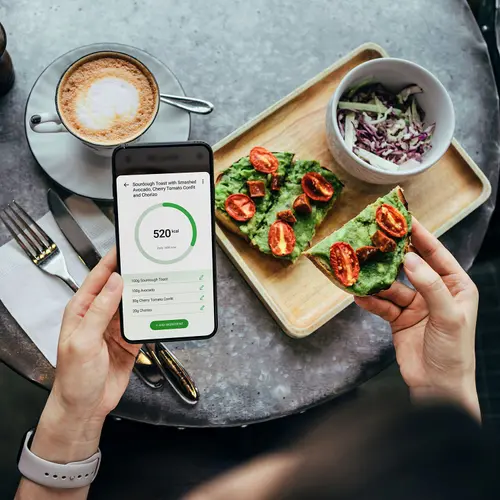What Are Plantains?
Plantains are a starchy tropical fruit that look like bananas but are bigger. They're green when unripe but turn yellow, then dark, as they ripen.
They're a mainstay in African, Caribbean, and Latino diets, where they're used more like potatoes than fruits.
Plantain vs. banana
Plantains belong to the banana family but are very different from Cavendish bananas, the type of bananas commonly eaten raw in the U.S. and Europe. Cavendish bananas are sometimes known as dessert bananas because of their sweet taste. Plantains are bigger and firmer than bananas. They're also less sweet and are usually cooked before serving.
Plantain Origins
Plantains originally came from Southeast Asia. But today, they're grown in large amounts in Central America, the Caribbean islands, South America, and Africa. Because they grow year-round in tropical climates, plantains are a major staple food in these areas.
They're becoming easier to find in the U.S. and Europe as people learn different ways of cooking and eating this healthy fruit.
What Do Plantains Taste Like?
Plantains have a slight banana taste but are starchier and not as soft or sweet as bananas. Green plantains have been compared to potatoes. As they ripen, they form more sugars, so their flesh becomes sweeter.
In many countries, plantains are cooked and eaten as a side dish or in stews. Green plantains can also be made into flour.
Plantain Varieties
The main difference in the plantains you buy is their degree of ripeness.
Plantains may have green, yellow, or blackish peels. The flesh of green plantains is as firm as a potato. They have more starch than yellow plantains.
Yellow plantains are softer, sweeter, and a little less starchy. Very ripe plantains have deep yellow flesh with an even sweeter flavor.
Plantain Benefits
The resistant starch in green plantains has sparked an interest for its health benefits. Resistant starch is fiber that your body doesn't fully digest, meaning it doesn't spike your blood sugar.
In addition, plantains can provide other health benefits like:
Digestive health
Plantains are good for digestive health in two ways. First, the resistant starch in them acts as a prebiotic, helping the growth of healthy bacteria in your colon. Second, plantains have a good amount of fiber, which improves the way your bowels work.
Diabetes control
Making sure blood sugar levels don't go too low or too high is an important goal if you're living with type 2 diabetes. Foods like plantains that digest slowly have a low glycemic index (GI). A GI under 55 is considered low. Plantains have a GI in the 40s, making them a good food choice if you have diabetes.
Blood pressure control
When you want to boost your potassium intake, your first instinct might be to reach for a banana. But plantains have more potassium than bananas.
Many people don't take in enough potassium. High blood pressure has been linked to too much sodium and not enough potassium. High blood pressure can cause a heart attack, stroke, aneurysm, and many other cardiovascular problems.
Healthy immune system
Little things can make a big difference in health. For example, you only need small amounts of certain vitamins and minerals to support a healthy immune system. Vitamin C, vitamin B6, and magnesium are three of these important micronutrients, and plantains are a good source of all three. Researchers have not confirmed whether taking these nutrients as supplements can offer the same protection.
Plantain Nutrition
Besides potassium, fiber, vitamin C, vitamin B6, and magnesium, plantains contain:
- Vitamin K
- Vitamin A
- Copper
- Iron
Nutrients per serving
A 1-cup serving of boiled green plantains contains:
- Calories: 166
- Protein: 1.5 grams
- Fat: 0 grams
- Carbohydrates: 40 grams
- Fiber: 4 grams
- Sugar: 3 grams
Things to watch out for
Plantains are a healthy food, but some ways of cooking them make them less healthy. Many plantain recipes call for frying. Because they easily absorb oil, this quickly raises the calorie and fat count per serving.
Some other plantain dishes, such as those for desserts, include lots of added sugar.
Plantain chips are a tasty snack, but they are also typically fried and contain high levels of salt.
From a health standpoint, your best bet is to look for recipes with small amounts of salt, oil, and added sugar.
How To Prepare Plantains
Plantains can be boiled or baked. To boil plantains, remove the skin, cut into chunks, and cook in boiling water as you would potatoes. When done, you can mash them like potatoes.
If your plantains have ripened and turned yellow, bake them in aluminum foil and use them in any dish where you want a slightly sweeter taste. Here are some ways to use plantains:
- Use them in stews and soups.
- Add chunks of ripe plantain to black bean chili.
- Slice and cook in an air fryer or convection oven for a healthier plantain chip.
- Use with chickpeas in a spicy curry.
- Serve lightly caramelized ripe plantains with gallo pinto, a Costa Rican dish of black beans and rice.
- Use very ripe plantains in place of bananas to make banana bread.
- Steam them and serve for breakfast.
Fried plantains
Many cultures prepare plantains this way. They can be cooked differently to make many foods like tostones, or fried green smashed or flattened plantains, and maduros, or fried sweet plantains.
How To Store Plantains
Store plantains at room temperature, and keep them away from sunlight. They should stay for 7-10 days. Once they're very ripe, you can put them in the refrigerator.
Don't store them in a plastic bag. This seals in moisture and can make your plantains rot.

